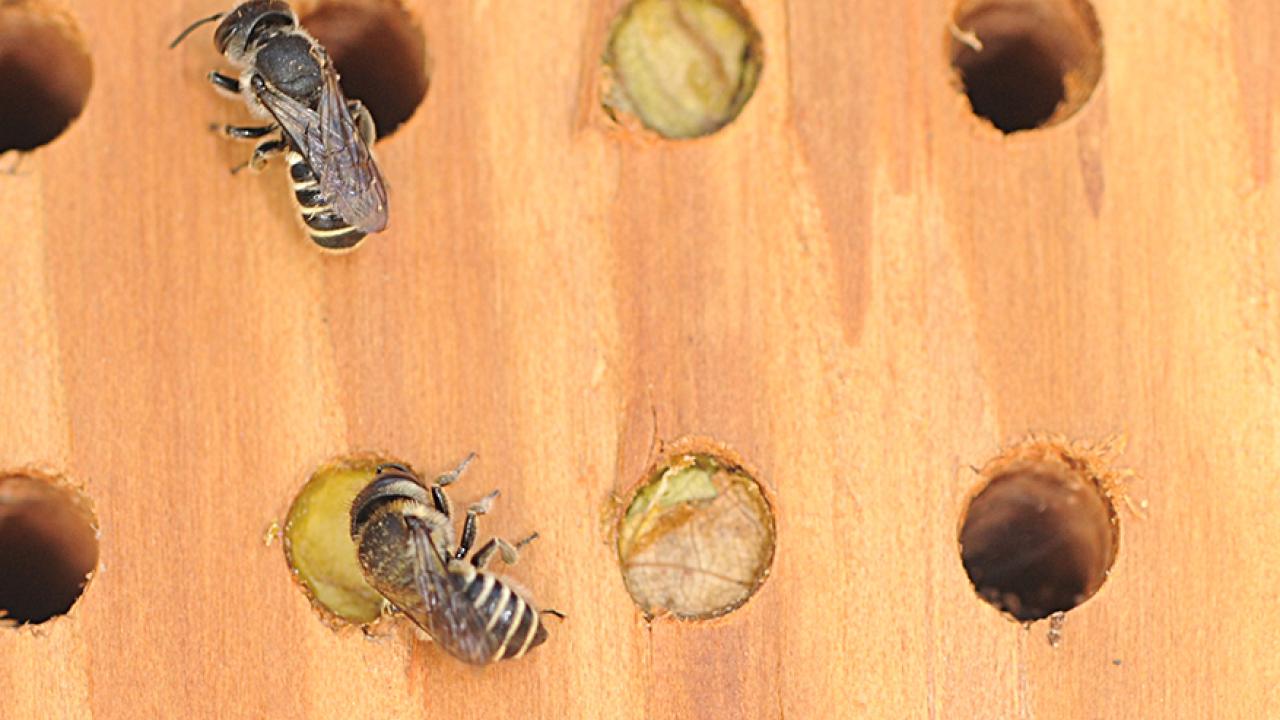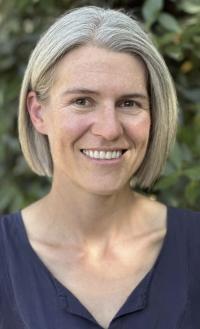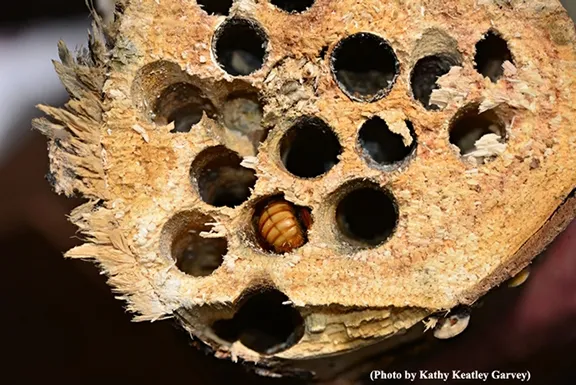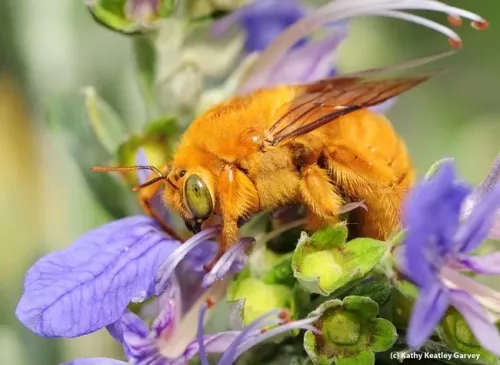
Vannette Lab to Showcase Native Bee Nests at Manetti Shrem Museum of Art

A special project on Saturday, Aug. 23 at the Manetti Shrem Museum of Art, UC Davis campus, will feature native bee nests and the research of UC Davis community ecologist Rachel Vannette, associate professor and vice chair of the Department of Entomology and Nematology.
The Art Spark session, free and open to the public, will take place from 1 to 4 p.m. in the Museum, officially known as the Jan Shrem and Maria Manetti Shrem Museum of Art. It is located on campus at 254 Old Davis Road, near the Mondavi Center for the Performing Arts
"People can expect to see a variety of ways in which bees construct their 'houses,' Vannette said. "We will show nesting materials from a few different bee species and groups that use different materials to make their houses including Osmia lignaria (mud), Megachile (leaves), Anthophora, Diadasia or Melissodes (digging in the ground), Anthidium (plant fluff!), carpenter bees (wood) bumble bees (wax), and if they attend they can work with some of the same materials that bees do to build their own creations."
Art Spark is "all abuzz" with bees during the month of August. Visitors can drop in for an afternoon of art making at the museum’s Carol and Gerry Parker Art Studio. "Each month, we offer a different activity that explores ideas, materials and processes connected to works of art on view," according to the website.
August: Sculpt like a Bee
"Switch up your perspective and create a unique structure with wax and other natural materials. Appreciate bee handiwork in Garnett Puett’s apisculptures."Art Spark + Bees
Aug. 23
"Learn about native bees and explore bee nest construction strategies with the Vannette Lab from the Department of Entomology and Nematology."

All ages and skill levels are welcome. "Making art is for everyone," a spokesperson said. "All activity supplies are provided."
Vannette, a Chancellor’s Fellow and an international leader in microbial ecology, studies interactions between plants, insects and microbes. She focuses on the chemical and microbial ecology of plant-pollinator interactions and how microbes influence plant defense and resistance against insect pests.
The Vannette lab is a team of entomologists, microbiologists, chemical ecologists, and community ecologists trying to understand how microbial communities affect plants and insects (sometimes other organisms too). "We often study microbial communities in flowers, on insects or in soil," Vannette says.

"We rely on natural history observations, and use techniques from chemical ecology, microbial ecology and community ecology. In some cases, we study applied problems with an immediate application including pathogen control or how to support pollinators. Other questions may not have an immediate application but are nonetheless grounded in theory and will contribute to basic knowledge and conservation (e.g. how can dispersal differences among organisms affect patterns of abundance or biodiversity?)."
The Manetti Shrem Museum of Art is described as "a contemporary art museum for today, committed to honoring the past and shaping the future while making art accessible and approachable to all. It builds on UC Davis’ legacy of exceptional teaching and practice of the arts to offer engaging experiences, exhibitions and educational programs that reflect and serve the community. The museum is a hub of creative practice for today’s thinkers, makers and innovators, now and for generations to come."
One-third of the museum’s 30,000-square-foot space is devoted to instruction, including a 125-seat lecture hall, classroom space and the drop-in Carol and Gerry Parker Art Studio. Opened in November 2016, the museum achieved LEEDv3-NC Platinum status and was named one of the 25 Best Museum Buildings of the Past 100 Years by ARTnews.
Margrit Mondavi (1925-2016), widow of Napa Valley winemaker Robert Mondavi (1913-2008) donated an initial $2 million to launch the project. Napa Valley winemaker Jan Shrem, founder of Clos Pegase winery, and his wife Maria Manetti Shrem, donated $10 million of the $30 million budget for building the museum.

